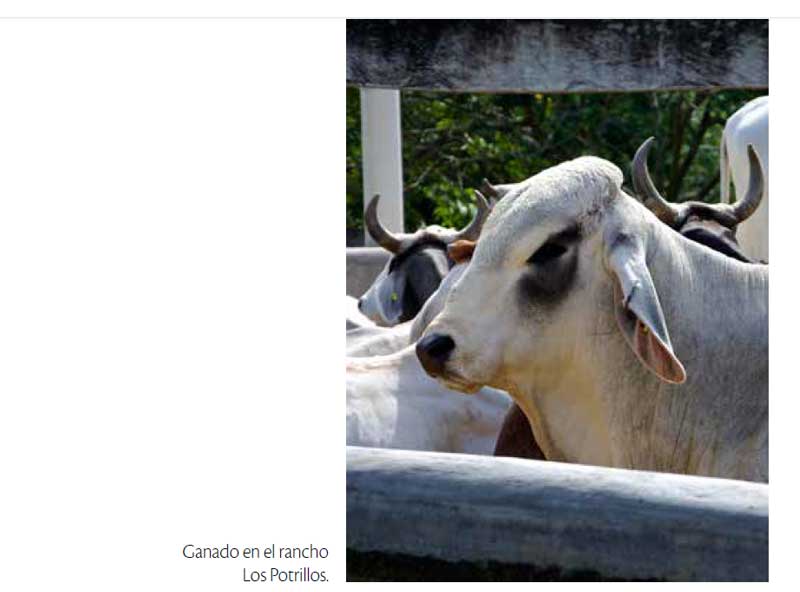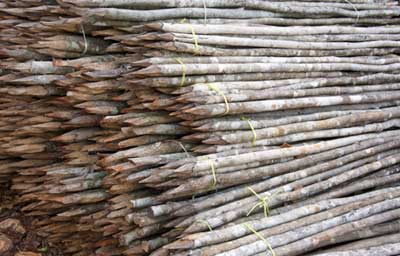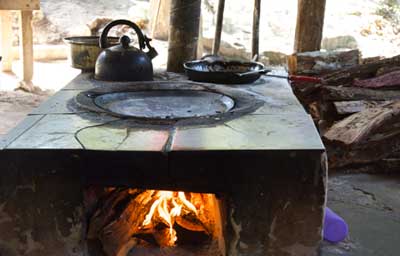Sistemas agrosilvopastoriles en el sur de Yucatán: rancho Los Potrillos

En el año 2004, CONAFOR inició un programa nacional de fortalecimiento en el manejo forestal con un importante fomento a la creación de asociaciones de silvicultores. En ese contexto, José Jeremías Palomo Kú, hoy presidente de Nukuch K’áax, y en sus inicios un reducido grupo de productores ganaderos, comenzaron a difundir el programa y una propuesta agrosilvopastoril de productor a productor con demostraciones en campo al sur de Yucatán. En 2006 se crea la asociación civil Nukuch K’áax con una clara misión, generar una cultura de conservación y emprendimiento como mecanismo de desarrollo en poblaciones rurales de la región, y el número de productores que se fueron sumando a la propuesta comenzó a crecer. Además de brindar asesoría y seguimiento a los proyectos, la asociación realiza una difusión de la Estrategia Nacional REDD+ que incluye sistemas silvopastoriles, mejoramiento de la milpa y aprovechamiento sustentable de la selva. Actualmente, está integrada por 32 ejidos, cinco pequeños propietarios y tres grupos de mujeres organizadas. En 2011 se realizó un estudio forestal en la región conocida como UMAFOR 3106, e incluyó diez municipios donde Nukuch K’áax tiene presencia. Para este estudio se analizaron imágenes satelitales de 1978, 1988, 2000 y 2008. En los resultados se puede ver que hace un poco más de 30 años comenzó un proceso importante de deforestación, pasando de contar con 81% de cobertura forestal en 1978 a 54% en 1988. Este período coincide con el Programa Nacional de Desmontes, pero se interrumpió en la década de 1980. Para el año 2000, la cobertura forestal se había recuperado hasta en un 75%, y tuvo una pequeña caída a 73% en 2008 (Bioasesores 2011). “Sin embargo, comenta José Jeremías Palomo Kú, aunque muchos potreros hayan sido abandonados y la cobertura forestal se haya recuperado, muchas especies ya han desaparecido”. Mientras camina por su rancho Los Potrillos cuenta: “cuando entré en este terreno hace unos 10 años esto era un acahual que fui tumbando para establecer zacate, pues mi plan era trabajar como se había hecho hace 40 años. Pero con el tiempo fui cambiando la visión y comencé a incorporar árboles de huaxín (Leucaena leucocephala), y en los linderos de cada potrero fui dejando franjas de t’olche’” (término maya que significa línea de árboles). Alrededor del año 2006, el señor Palomo Kú comenzó a hacer pruebas de pastoreo rotativo facilitado por el uso de cerco eléctrico, y de esa manera tener un mejor control en el manejo de su pastizal. Así comenzó una búsqueda de alternativas que mejoraran la productividad de su ganado, ya que bajo manejo convencional en época seca se pierde mucho peso, e incluso muchos ganaderos deben deshacerse de sus animales. Fue hace unos cinco años, comenta, cuando la Fundación Produce se acercó con la propuesta de implementar un sistema silvopastoril. Por aquellos años, Nukuch K’áax junto con CONAFOR realizaron un diagnóstico de las principales causas de deforestación en la zona, y evaluaron el potencial de implementar un sistema de pago por servicios ambientales por fijación de carbono. Las causas más importantes de deforestación identificadas fueron ganadería y milpa tradicional, por lo que se inicia una propuesta para la difusión de sistemas silvopastoriles y milpa mejorada entre los socios de Nukuch K’áax. En 2013, a través de la Alianza MREDD+, TNC apoyó un proyecto con Nukuch K’áax para implementar parcelas demostrativas silvopastoriles en cinco ejidos: Xul, San Juan, Becanchén, Ek Balam y San Isidro, las cuales se suman al rancho Los Potrillos que ya había comenzado con las prácticas. Estas parcelas están teniendo un impacto positivo en la región, ya que otros productores comienzan a mostrar interés en la propuesta. Esto es porque durante la época de sequías el huaxín es una buena fuente forrajera que se adapta a las condiciones ambientales, y esto se refleja en ganancia de peso de los animales. El ganado se alimenta del árbol cuando éste tiene alrededor de un metro de altura, y si algún árbol presenta dominancia la idea es dejarlo para que sirva como fuente de semillas. Además, con la agricultura se trabaja un sistema mejorado de la milpa maya utilizando abonos orgánicos, siembra en surcos elevados y rotación de cultivos, entre otras prácticas. “Antes solo pensaba en hacer potreros grandes”, dice Palomo, “porque pensaba que me ahorraba trabajo, las vacas estaban un mes y medio pastoreando y no necesitaba ir todos los días al rancho. Con el tiempo entendí que es todo lo contrario, si queremos hacer una ganadería sustentable y no tener un pastizal degradado tenemos que apuntar a potreros pequeños y hacer una rotación de pastoreo constante. Para este manejo es útil el cerco eléctrico, ya que permite ir cambiando día a día el sitio de pastoreo. Pero no se trata de implementar solo alguna de estas medidas, un sistema silvopastoril tiene muchos componentes, como las líneas de huaxín, los t’olche’ cultivados y con regeneración natural, la rotación de potreros y las pasturas implantadas, entre otras prácticas, porque su nombre lo indica, es justamente un sistema”.
En el rancho Los Potrillos ya se está viendo el cambio, el ganado no pierde peso y no es necesario comprar alimentos balanceados durante la época seca. La visión es que el rancho sea autosustentable, y como se trata de un sistema, la agricultura es un componente más. Comenta Palomo que cuando los abuelos hacían milpa dejaban una franja de árboles que servía de protección contra vientos fuertes, y también para que sea una fuente de regeneración de especies forestales como jabín (Piscidia piscipula) o tzalam (Lysiloma latisiliquum). “Al fomentar el t’olche’ invertimos en el futuro”, dice Palomo, “porque las especies que logran desarrollarse servirán como forraje, leña, alimento, sombra, perchero para aves e insectos benéficos, y además se puede extraer plantas útiles, comestibles, medicinales y para construcción”.
En palabras de José Jeremías Palomo Kú, “a los campesinos no tenemos mucho que enseñarles pero sí mucho que recordarles, porque originalmente nuestros antepasados hacían la milpa maya en una hectárea, no en diez ni en veinte. En esa hectárea cultivaban maíz, frijol, ibes, calabaza, camote, mínimo eran diez o quince cultivos. El beneficio está presente siempre que pongamos un árbol en el suelo”.
Aumentar la capacidad productiva por hectárea, junto con el cambio de visión que se está fomentando respecto de incluir a los árboles como componente esencial del paisaje ganadero, reduce la presión sobre la selva que aún está muy bien representada en esta zona. Los ganaderos comienzan a dejar de ver a la selva y los árboles como un enemigo de la productividad, y comprueban que un mayor rendimiento se puede lograr con cambios relativamente sencillos en las prácticas de manejo, y no es necesaria la deforestación de una mayor cantidad de hectáreas para el pastoreo. Con esta intensificación sustentable, se logra además mejorar la resiliencia del sistema productivo ganadero ante los embates del cambio climático. La presencia de árboles y arbustos en el sistema provee sombra, protección contra vientos, y alimento durante más tiempo al iniciar la temporada de sequía.
Bibliografía Bioasesores AC, 2011. Estudio regional forestal, Unidad de Manejo Forestal 3106. SEMARNAT, CONAFOR, Nukuch K’áax AC, Yucatán, México. 556 p. |
























